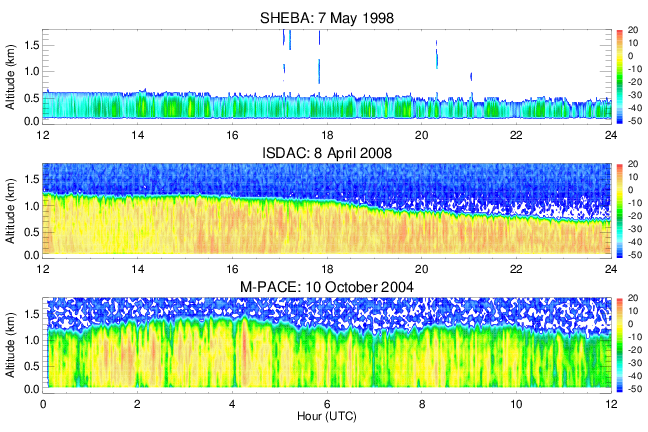Arctic mixed-phase boundary-layer clouds: Advances in understanding and outstanding questions
Submitter:
Fridlind, Ann M. — NASA - Goddard Institute for Space Studies
Area of research:
Cloud Processes
Journal Reference:
Science
It is now widely demonstrated that independent large-eddy simulation codes with mixed-phase microphysics can widely reproduce the basic properties of well-observed mixed-phase stratiform cloud cases if ice crystal numbers and properties are realistic. We argue that taken together, these studies largely demystify the longevity of such clouds: in the limit of low ice crystal number concentrations, such clouds resemble their ice-free counterparts.
Impact
Even though ice crystal numbers may be widely too scarce to threaten mixed-phase cloud longevity, it remains difficult to explain the number of ice crystals present using observed aerosol capable of nucleating ice, especially when relatively large droplets are present. We note past and recent evidence for ice multiplication under such conditions.
Summary
An overview of mixed-phase boundary-layer cloud simulations emphasizes what detailed studies reveal about the level of understanding of microphysical processes, using analogous liquid-phase boundary-layer clouds as a reference for the dynamical conditions. We focus primarily on modeling results from three major field campaign case studies, spanning a range of liquid water path, aerosol loading, cloud temperatures, and active processes (including drizzle, aggregation, and riming). Simulations with detailed microphysics are able to reproduce basic aspects of all three case studies, including continuous ice formation within the context of a well-mixed liquid-cloud-topped layer. However, simulations constrained with measurements of ice nuclei generally underpredict the observed amount of ice present, indicating a possible role for ice multiplication that is poorly established. Assumed ice properties may also bear a significant influence on the water vapor budget and reflectivity properties, but remain imprecisely quantified on a case study basis.



